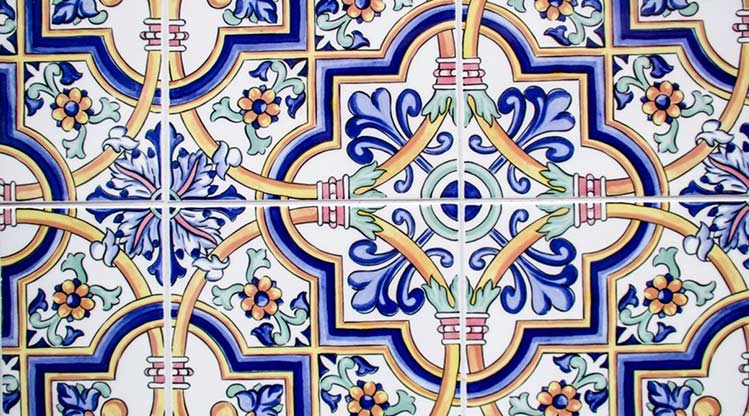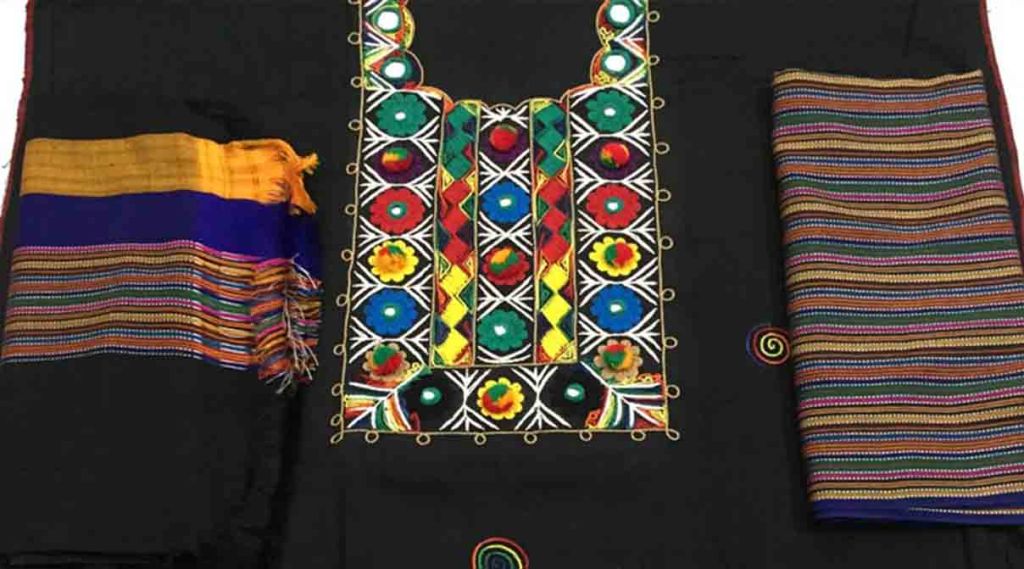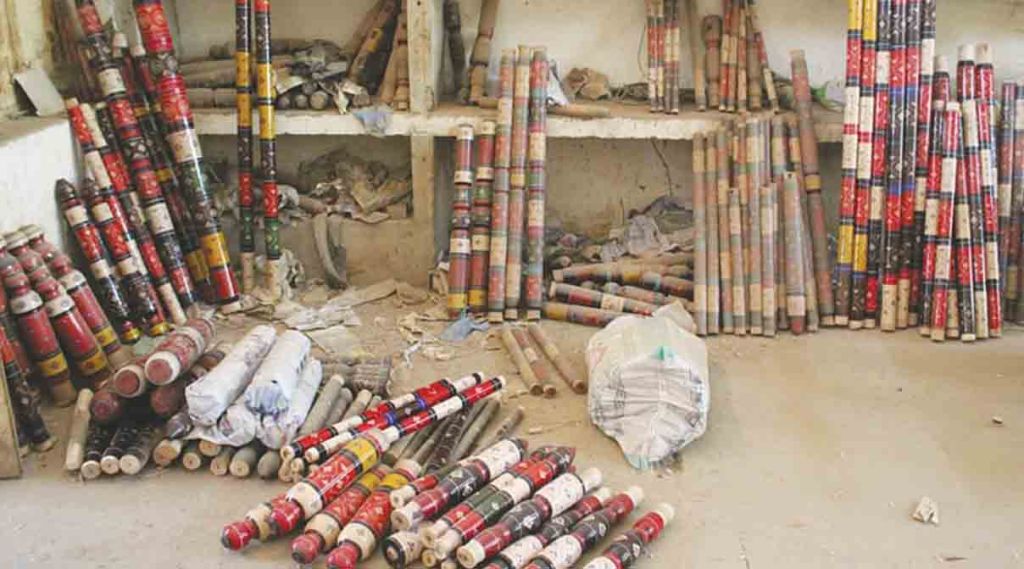A land of aesthetics
The land that begins with water and ends with high peaks, Pakistan has seen it all. Our culture, our people, have signified the preservation of our heritage. In ruins like Rotas Fort, Taxila, Mohenjo Daro, one this is common, the colour in their art.
The well-thought architecture, even now, can be observed in every crevice. The designs have gotten influenced by every culture, religion and civilization that has stepped foot on this land.
We need to be more grateful for the craftsmen of Pakistan, they portray our heritage in art. Art is the only language that can be understood by every person to touch, to see, to feel is art.
Each mould is built with multiple aspects to being taken into consideration: the weather, the colour, the room, the personality, the texture and the purpose. Before laying a brushstroke, our artisans have the sculpture in their minds. They seek the future.
For a land this rich in history, starting from the Indus Civilization to current day Pakistan. Our craftsmen do us justice with the intrinsic pieces that represent the voices and beauty we inherit.
Diving into Sindh
Sindh is famous for its beautiful pieces that incorporate light-reflecting work and eccentric colours. When you head to the left of river Indus, there stands Hala, one of the most famous pottery piece.
Hala is famous for its khaddar, pottery, ceramic work, Jandi, Rilli and more. You can see the craftsmen at work, and if you’re lucky, they might even grant you a free lesson.
The young people helping out their parents and grandparents are keen to preserve their family dynasty. Their legacy lies in their breathtaking artwork and fabrics.
The handicrafts and pottery from Hala, are seen being sold in markets all across the world for centuries; Samarkand, Armenia, Baghdad and Istanbul.
Ajrak
Ajrak is a kind of fabric commonly worn by Sindhis to portray their culture.
The design is made by block printing using a tool, called Ajrak block; the design is pressed on the fabric. The block is carved, from wood with holes in it for the dots.
During ancient times the holes were carved by hand, but now we observe the usage of a brass nail. Then the block is dipped into the dye (the most significant dye being indigo) and stamped on the fabric.
The pattern seems like flowers or something floral, but it is a combination of circles, squares and other geometry. The symmetry is noticeable; this was due to the influence of the Muslims during the Mughal era.
The cultural colours of Ajrak are black and red. And this entire process was an heirloom of the Indus civilization. Ajrak can be found in India as well.
Ajrak shawls are known as Shajrak; they are found in Punjab and coloured cyan instead of black and red. .This fabric has now become a symbol of the Sindhi culture as well.
In the Mughal era, the fabric was bestowed upon the guests of honour. Yet this tradition can be observed today as well
Kaashi
Kaashi is the pottery and ceramic side of Sindhi artefacts. It is blazed with beautiful blues and earthy terracotta.
Kashgar’s work more than 12 hours on a piece of enamelled pottery and mosaic work. The popular artefacts are glazed ceramic, earthenware and anything terracotta.
They are decorated with beautiful hues of cobalt blue, turquoise, white, brown and mustard. The art of this pottery is known as Kashgari. Pakistan exports the Kashgari to regions in the Middle East and Europe.
The artisans work in a pottery yard, which is one big open field with a courtyard, protected by a naked brick wall. For stacking, storing and drying products they utilize the open field.
The moulding, glazing, mixing, glazing and shaping is achieved in the courtyard.
Soosi
Soosi is a sindhi fabric, it is made by sindhi women for women. It requires skilled handloom weaving to join multiple colours and threads.
The fabric consists of bright shades of pink, yellow, orange, blue, purple and more. The multi striped pattern is the iconic soosi fabric but now this style is incorporated in embroidery and single fabric as well.
It has been here since the Indus Civilization, Hala and Hyderabad are predicted to be its birthplace.
This fabric was a part of Pakistan’s cottage industry exports, however, now only a few authentic artisans make this fabric.
In ancient times it was made with a blend of cotton and silk, but now it is made with a synthetic material known as viscose. It is mostly used for Womens trousers or shalwar worn in Pakistan.
Belonging to Sindh, the 1907 Gazette reports “The trouser material known as Susi occupies 400 looms in Nusserpur and 500 looms in Hala, which are important centres of this industry, and 250 in Thatta.”
Related: Handicrafts of Pakistan: A Pour Over of the Famous Artistry
Sindhi topi
Sindhi topics are a significant part of the sindhi heritage. It is a cylindrical cap, covered at the top, with a skilled cutout in front of it to expose the forehead. The cutout is an upside down sweetheart cutout.
The fabric has geometrical designs on it. And it is decorated with embroidery, beadwork and small mirrors.
The sindhi topi is mainly produced in Tharparkar, Umerkot, Sanghar, Kandhkot and Nawabshah.
It is given as a sign of respect to guests and family. In many sindhi families, this topi is passed down as an heirloom as well. The topi itself holds high honour and has a day solely to celebrate it the first sunday of every december.
Jandi
The jandi craft is usually associated with the hindoro. A hindoro is a double seater swing, it is elevated by four wooden pieces with two more for support and one at the top to hold the swing.
The swing is rectangular with a 5 inch elevated border. All the wood pieces used for the hindoro are beautifully crafted by the art known as jandi.
The craftsmen who create this are known as Vigha Mal or Vighio; they claim this art to be around 300 years old. It takes 15 days to make one swing. The wood requires preparation and time itself.
A special wood, Bakhan, is used. The wood is dry and light, it absorbs paint and seals with polish excellently as well.
First the wood is left in the sun to dry out. After drying the wood is cut and the appropriate cuts and curves are made into it. After that the wood is applied to 7 different colours and then sealed off with polish, then some shine is added.
It is recommended to keep the swing away from rain or sunlight to preserve the colour longer. These colours and designs are known as jandi and the spotwork and beadwork is known as Jahawadar Jandi.
After the colouring process, it is placed on a brick stove with coal emitting heat from under it. Lastly, for the seating, the ropes, jute or thread is woven into the swing.
Addressing the Problem
What used to be a livelihood for thousands of people in villages have now become a rarity due to poor marketing, lack of resources and the hand of the middleman.
Despite the exquisite artwork done by hand these families remain poor. That is because in return for their work they demand food and shelter. We , as a community, need to realise they deserve more than this.
In 2017 it was calculated that 65% of women participate in making these crafts as a way of fun and earning money. But now 90% of those women are unemployed. Our artisans lack adequate status and well deserved rewards.
A Kashgar in Hala reported to have earned Rs700 for a 9hour day at work. Even after being a mass producer of Sindhi crafts; why does Hala remain poor? The middleman.
The workers are forced to sell their craft for less than half the market price resulting in them not profiting. And hence the intermediaries are causing our cultural heritage to slowly disappear.
The craftsmen request a steady power supply, electric wheels, electric loom and recognition for their art. If we do not preserve our culture, the handicrafts will just become a money exchange between the rich.